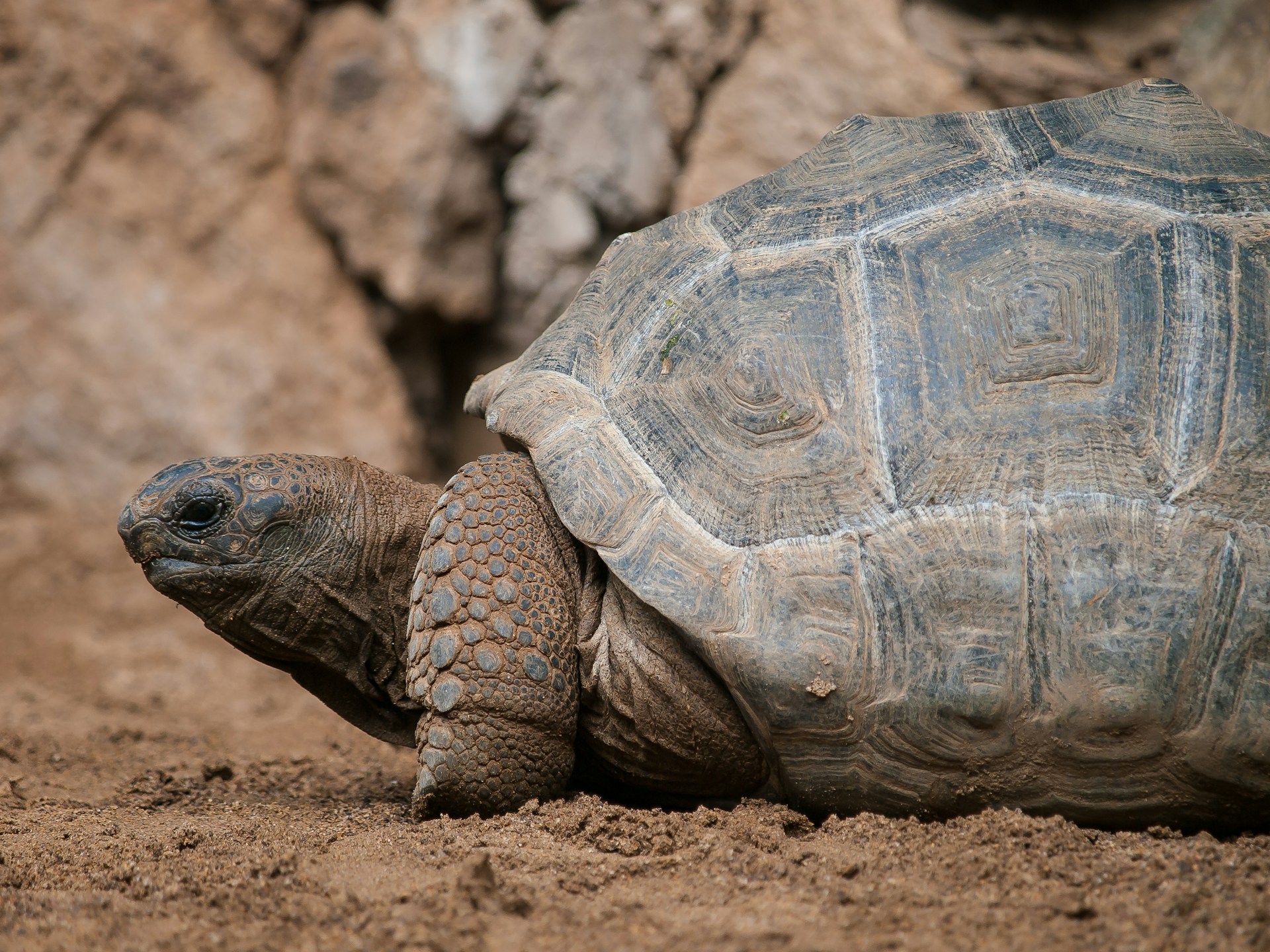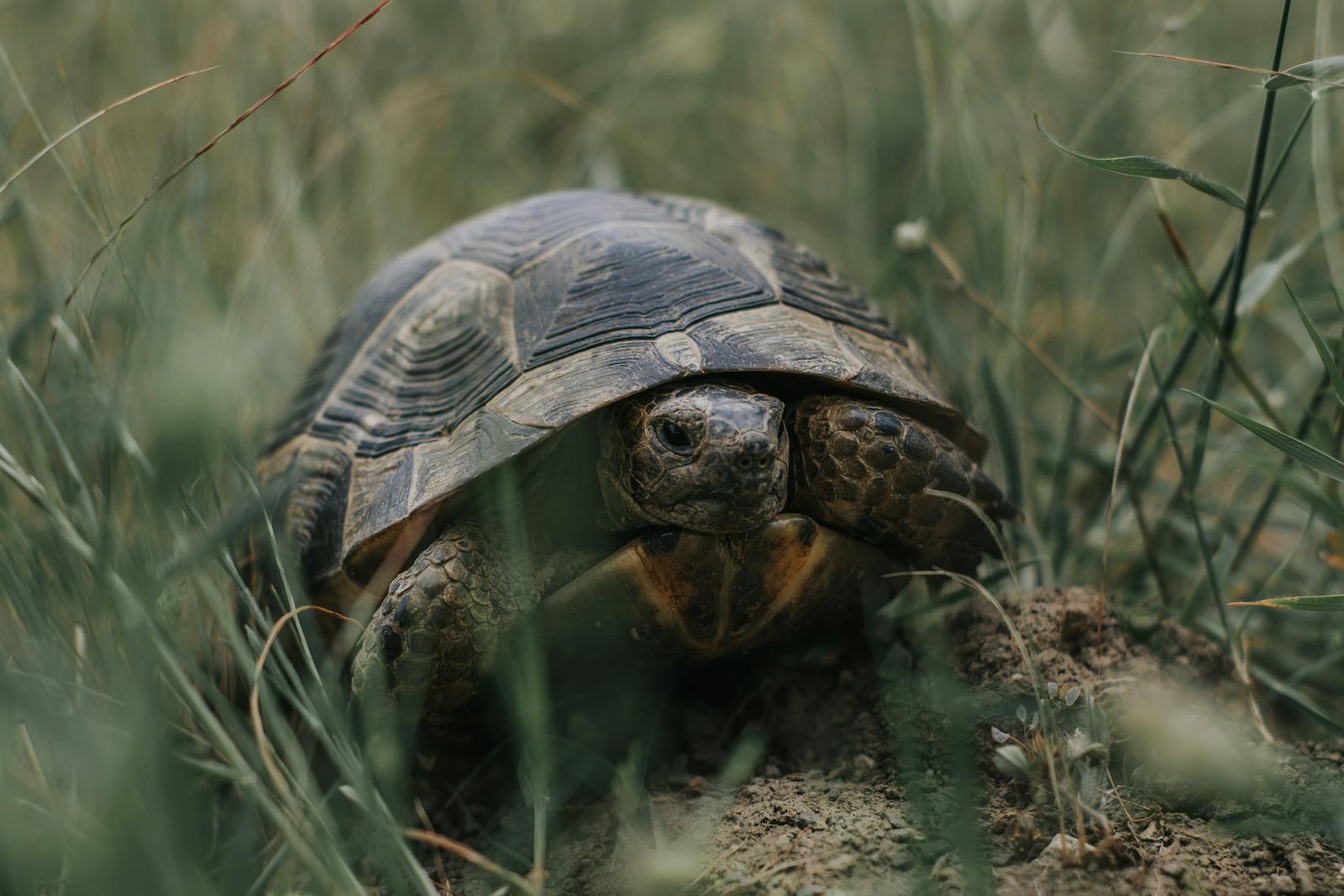In the harsh landscapes where extreme temperatures and predators pose constant threats, certain tortoise species have evolved remarkable survival strategies.
Among these adaptations, the ability to excavate elaborate underground burrows stands as one of the most fascinating.
These engineering marvels of the reptile world create microhabitats that protect their architects from the elements and provide refuge from danger.
The gopher tortoise of North America and the African spurred tortoise represent nature’s master diggers, creating subterranean networks that not only ensure their own survival but often support entire ecosystems of other creatures seeking shelter.
Their powerful forelimbs, specialized for digging, allow them to create burrows that can extend several meters underground and sometimes stretch for astonishing distances horizontally.
The Gopher Tortoise: North America’s Premier Excavator
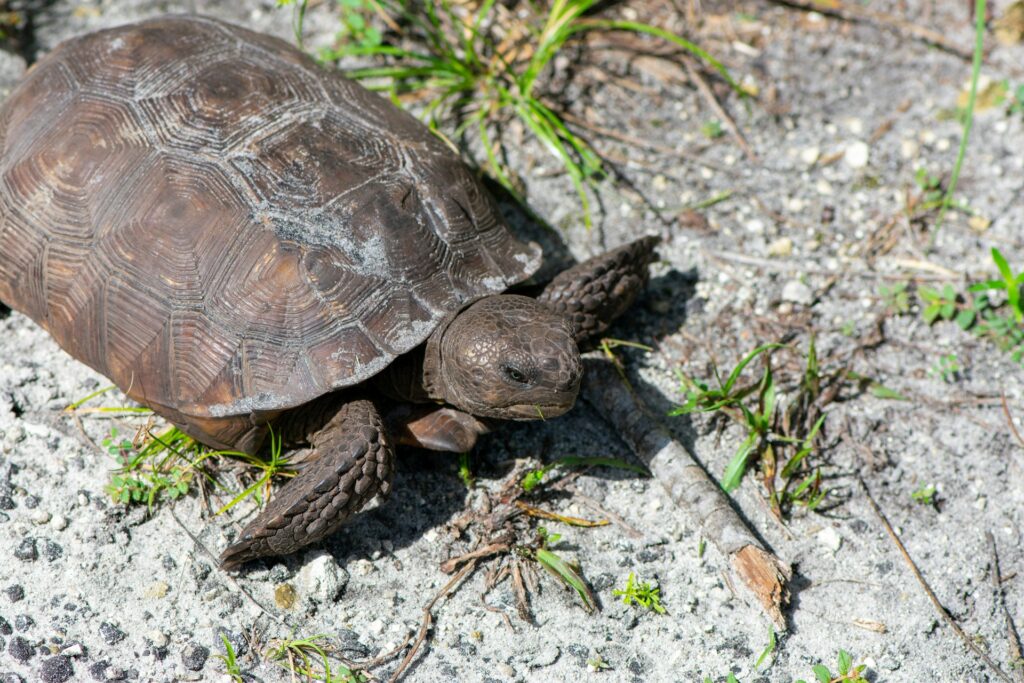
The gopher tortoise (Gopherus polyphemus), native to the southeastern United States, stands as perhaps the most accomplished burrowing tortoise in North America. These remarkable reptiles can dig burrows reaching depths of up to 10 feet (3 meters) and extending horizontally for up to 40 feet (12 meters).
The entrances to these burrows are typically half-moon shaped, reflecting the tortoise’s shell profile as it enters and exits its underground sanctuary.
Gopher tortoises possess specialized front limbs with flattened, shovel-like appendages that function as efficient digging tools, allowing them to move significant amounts of soil with each powerful stroke.
Their burrows maintain relatively stable temperatures and humidity levels, creating a crucial microhabitat that protects not only the tortoise but also approximately 350 other animal species that may share these subterranean shelters.
African Spurred Tortoise: Desert Tunneling Expert
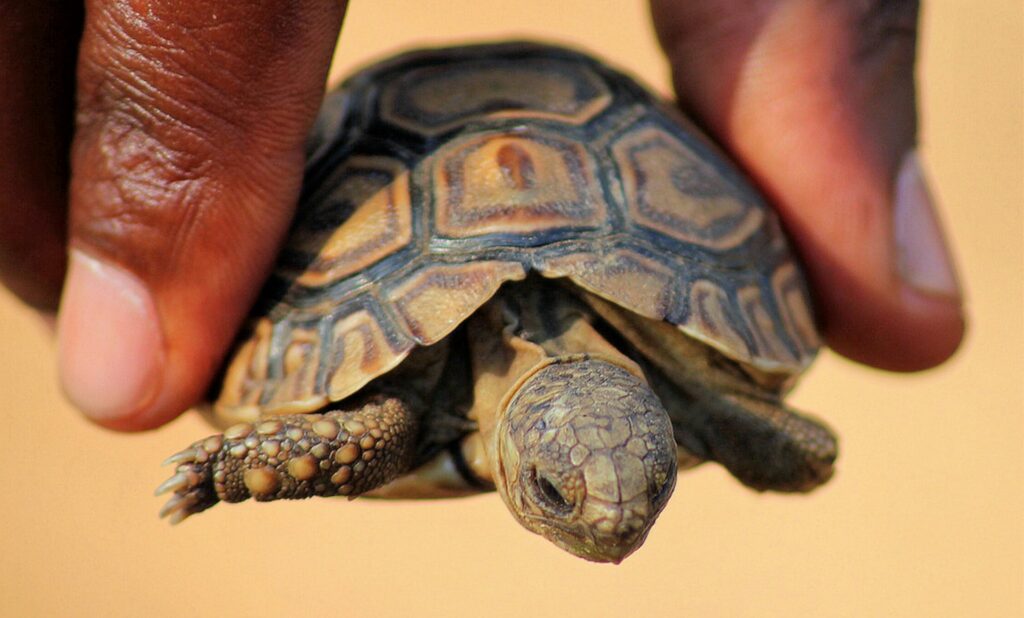
The African spurred tortoise (Centrochelys sulcata), also known as the sulcata tortoise, has perfected the art of burrow construction in its native arid regions across northern Africa.
These tortoises, which can grow to be the third-largest land tortoise species in the world, excavate burrows that may reach depths of 10 feet (3 meters) or more to escape the extreme desert heat.
Their powerful front legs are equipped with spurs—thick, pointed scales that aid in breaking up hard-packed soil and providing traction during excavation.
Sulcata tortoise burrows often feature complex designs with multiple chambers and can maintain humidity levels near 50% despite the surrounding desert conditions, creating a life-saving microclimate.
The entrances to these burrows are typically wider than the tortoise itself, allowing the animals to turn around inside rather than having to back out when exiting.
The Essential Anatomy for Digging
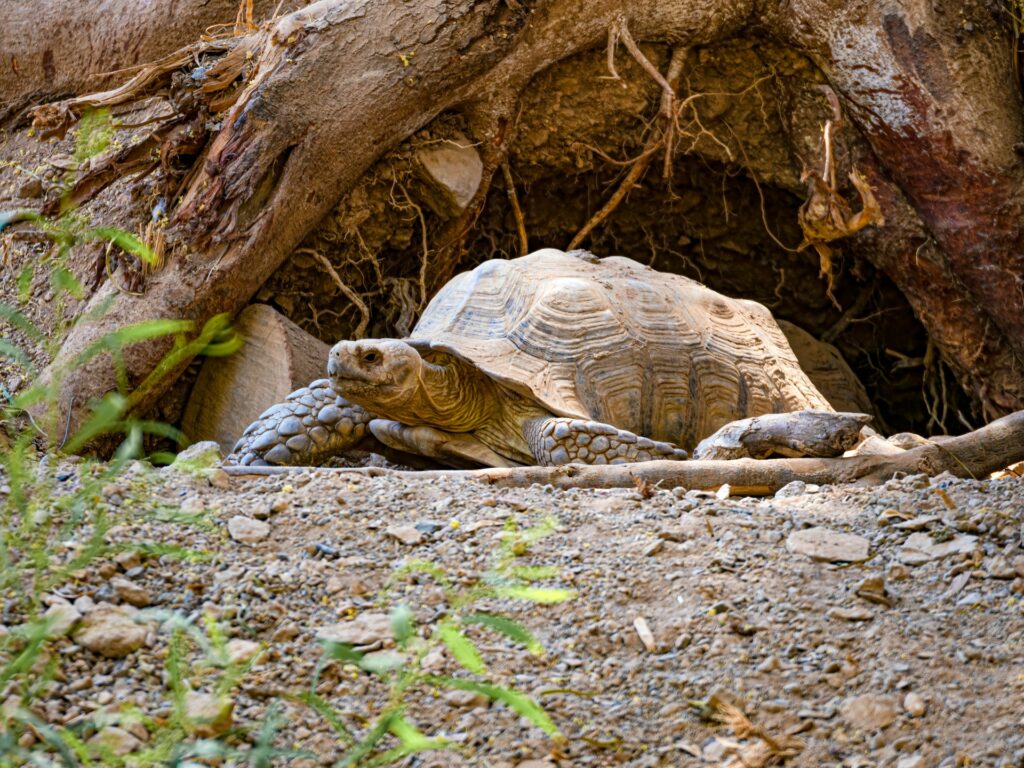
Burrowing tortoises possess specific anatomical adaptations that facilitate their excavation abilities. Their front limbs feature significantly enlarged scales and powerful musculature that transform these appendages into effective digging tools.
The forelimbs of species like the gopher tortoise have evolved to be shorter and more robust than those of non-burrowing tortoises, providing better leverage and force when moving soil.
Their claws are typically thicker and more curved, allowing them to break apart compacted earth and scoop it away efficiently. Some burrowing species also possess specialized scales on their forelimbs that form shovel-like projections, enhancing their digging capabilities even further.
Additionally, the neck musculature of these tortoises is well-developed, allowing them to support their heads as they use them to compact the burrow ceiling and walls during construction.
Burrow Architecture and Design
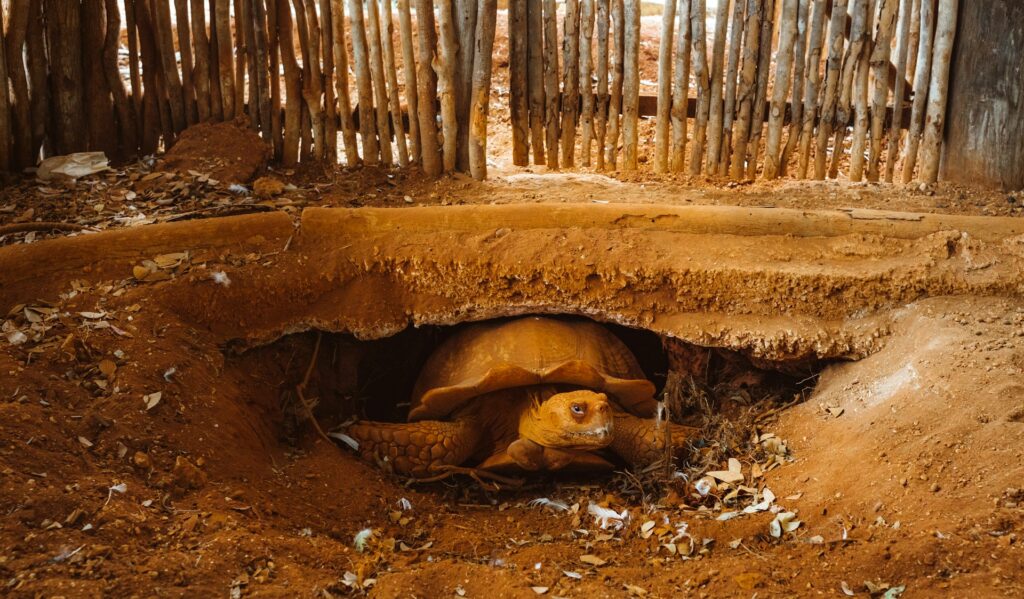
The underground shelters created by burrowing tortoises reveal sophisticated architectural elements that showcase evolutionary ingenuity.
Most tortoise burrows feature a single entrance that slopes downward at approximately a 30-degree angle before leveling off into a horizontal chamber where the tortoise primarily resides. This design prevents flooding during rainstorms while still allowing for adequate ventilation through the entrance.
Many burrows include strategic turns or bends that help regulate temperature and humidity while also making it more difficult for predators to access the main chamber.
Some species, like the gopher tortoise, create burrows with wider areas that serve as turning chambers, allowing the tortoise to reverse direction without having to back up the entire length of the tunnel.
The walls of these burrows are often compacted by the tortoise pressing its shell and limbs against the soil, creating a surprisingly stable structure that can last for decades.
Environmental Benefits of Burrow Systems
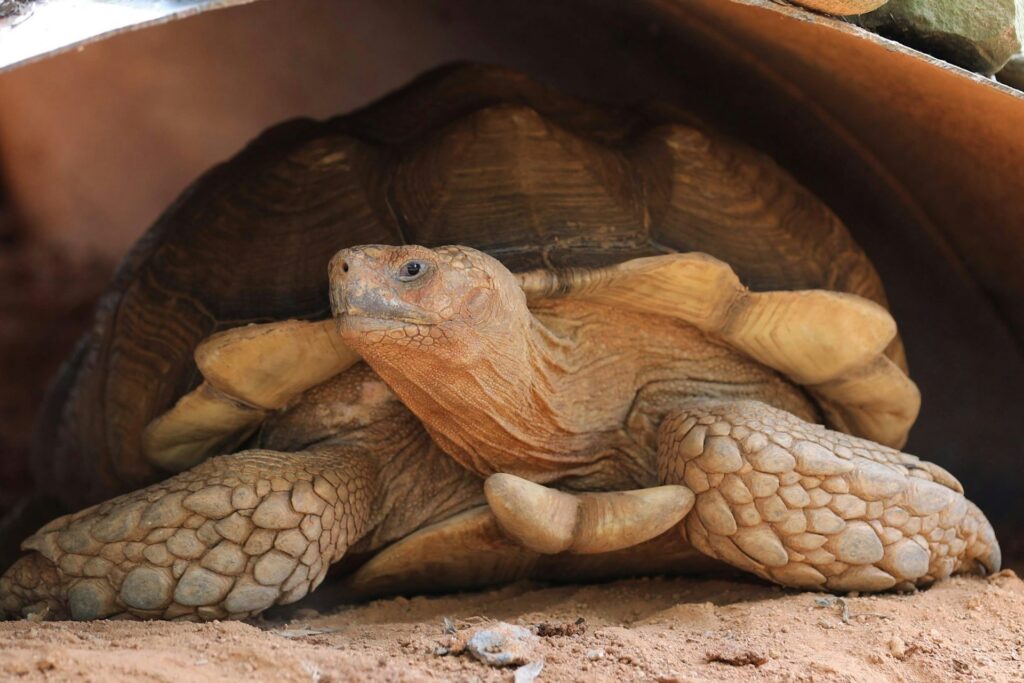
The extensive burrow systems created by tortoises deliver substantial ecological benefits that extend far beyond the tortoises themselves. These underground networks create crucial microhabitats that support biodiversity, with a single gopher tortoise burrow potentially hosting hundreds of different species throughout its lifetime.
Scientists refer to burrow-digging tortoises as “ecosystem engineers” because their excavation activities significantly modify the landscape and create habitat opportunities for countless other animals.
The soil displaced during burrow construction brings nutrient-rich deeper soil layers to the surface, enhancing plant growth and diversity in the surrounding area.
Additionally, these burrows can serve as natural firebreaks during woodland or grassland fires, protecting not only the tortoise but also other wildlife seeking refuge from the flames.
The presence of these burrow systems can increase local species richness by as much as 650% compared to similar habitats without burrowing tortoises.
Temperature Regulation Benefits

One of the primary functions of tortoise burrows is temperature regulation, allowing these ectothermic reptiles to survive in environments with extreme temperature fluctuations.
The underground soil provides exceptional insulation, keeping burrows significantly cooler than surface temperatures during hot periods and warmer during cold spells.
Scientists have recorded temperature differences of up to 30°F (17°C) between the surface and deep within tortoise burrows during summer heat waves.
This temperature buffering is particularly crucial in desert environments where surface temperatures can exceed 120°F (49°C), potentially fatal levels for even the most heat-adapted tortoises.
The thermal stability of burrows enables tortoises to maintain their body temperature within optimal physiological ranges without expending excessive energy on thermoregulation.
During winter months in cooler parts of their range, tortoises often retreat deeper into their burrows where the temperature remains above freezing, allowing them to survive cold periods that would otherwise be lethal.
Protection from Predators
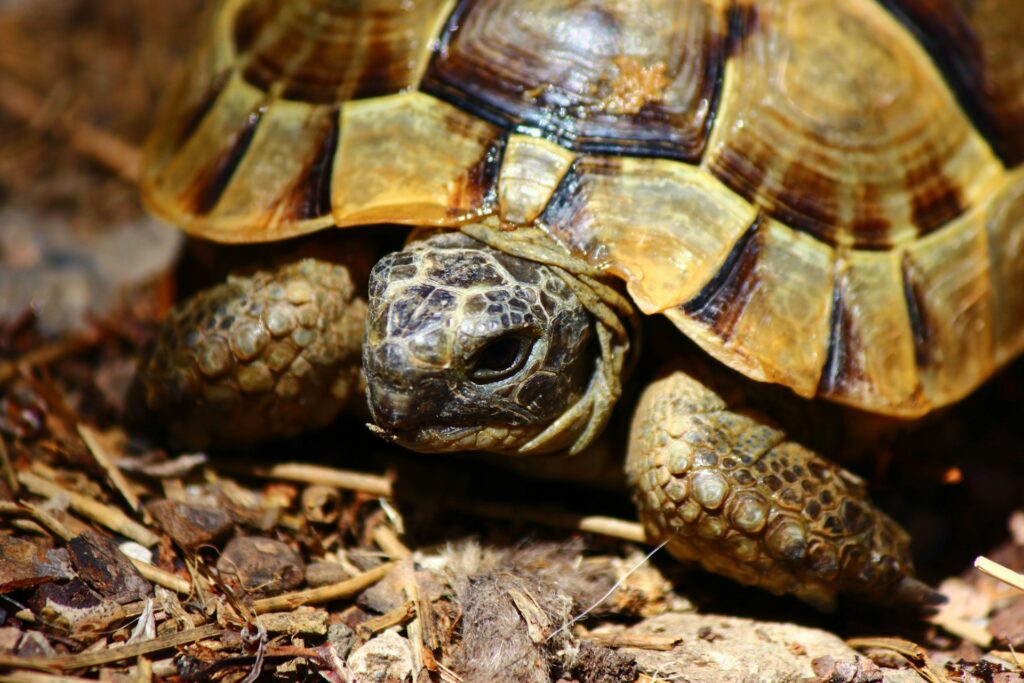
Tortoise burrows serve as critical defensive structures against various predators that might otherwise easily capture these slow-moving reptiles. The narrow, curving entrances of many tortoise burrows make it difficult for larger predators like coyotes, bobcats, or monitor lizards to reach the tortoise inside.
Young tortoises, which are particularly vulnerable to predation, often utilize smaller “pallet” burrows—shallow depressions that allow them to conceal themselves just below the surface of the soil.
When threatened while away from their burrow, many tortoise species will quickly retreat to the nearest burrow, sometimes even using those excavated by other tortoises or animals if necessary.
The fact that some tortoise species, like the gopher tortoise, create burrows with tight-fitting entrances matching their body shape means that predators attempting to enter must face the tortoise’s protected shell and powerful limbs blocking the narrow passage.
Desert Adaptations in Burrowing Behavior
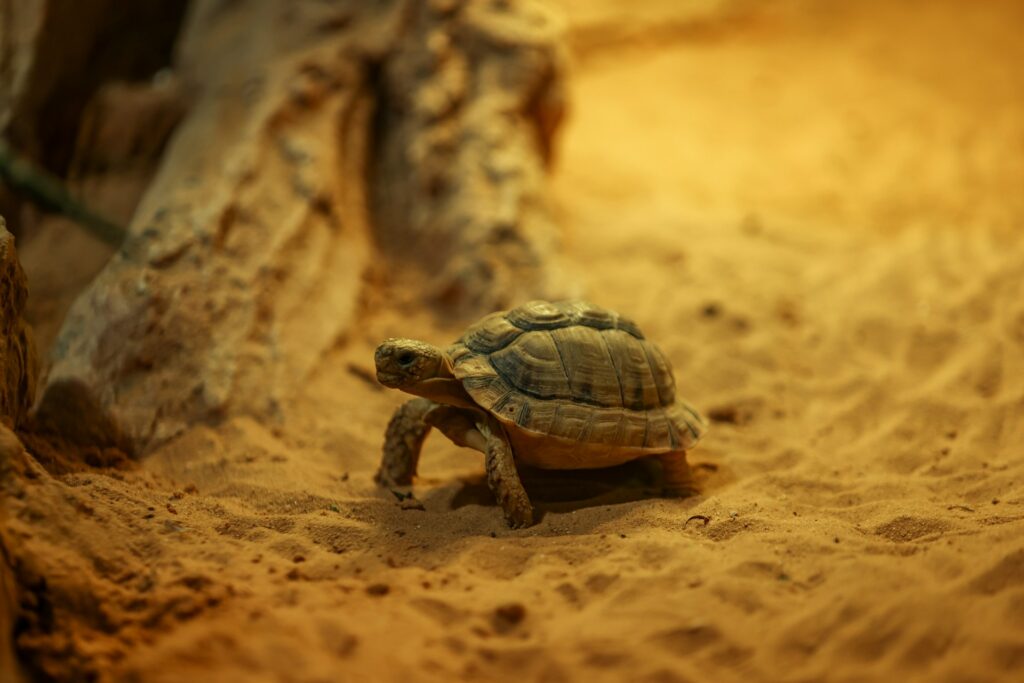
Tortoises inhabiting desert environments have refined their burrowing behaviors to combat the extreme challenges of arid conditions.
Species like the desert tortoise (Gopherus agassizii) of the Mojave Desert dig complex burrows that can maintain humidity levels near 30-40% even when the outside air has less than 5% humidity, helping prevent dangerous dehydration.
These desert specialists often dig multiple burrows throughout their home range, creating a network of refuges that can be accessed as needed while foraging.
During the hottest months, desert tortoises may estivate (a summer dormancy period) in their deeper burrows, emerging primarily in early morning or evening hours to avoid peak temperatures.
The soil excavated from tortoise burrows in desert environments often creates small berms that trap rainwater, creating microhabitats where more diverse plant species can grow, which in turn provides better foraging opportunities for the tortoise when active.
Seasonal Variations in Burrowing

Burrowing tortoises adjust their excavation behaviors and burrow usage according to seasonal changes in their environment.
During breeding seasons, male tortoises may dig shallow temporary burrows as they travel more extensively in search of mates, saving their energy for reproduction rather than elaborate burrow construction.
Female tortoises often dig special egg-laying burrows that differ from their regular dwellings, typically creating shallower depressions with carefully selected soil composition and sun exposure to provide optimal incubation conditions.
In regions with cold winters, tortoises dig deeper, more complex burrows for brumation (reptilian hibernation), sometimes extending several meters underground to reach depths below the frost line.
Conversely, during rainy seasons, some tortoise species may construct burrows with slightly elevated entrances and drainage channels to prevent flooding of their underground chambers.
The Digging Process Observed
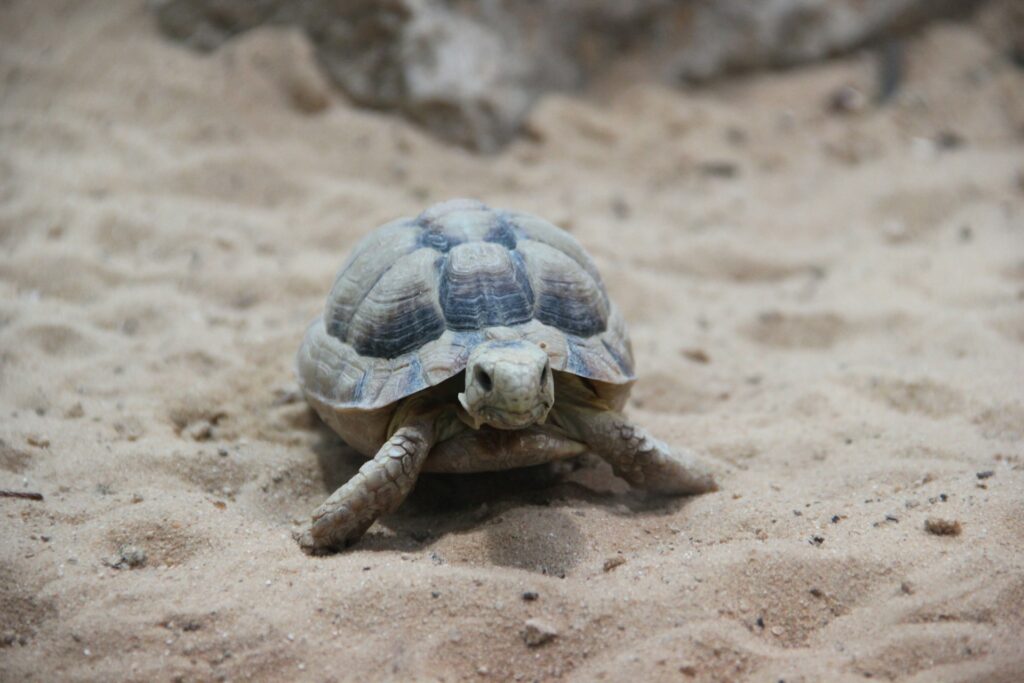
The actual process of burrow excavation by tortoises follows a methodical pattern that showcases their remarkable strength and determination.
Tortoises typically begin by selecting a suitable location with appropriate soil composition, often choosing slightly elevated areas with good drainage to prevent flooding.
The initial excavation involves the tortoise scratching at the soil with its powerful front limbs in alternating movements, similar to a swimming motion, while periodically using its head to push loosened soil aside.
As the burrow deepens, the tortoise uses its plastron (lower shell) to compress the floor of the tunnel while the carapace (upper shell) helps shape and reinforce the ceiling.
A medium-sized gopher tortoise can move approximately 35 pounds of soil in a single day during active burrow construction periods.
The entire process of creating a primary burrow may take several weeks to several months, depending on soil conditions and the tortoise’s size and energy reserves.
Communal Use of Burrows
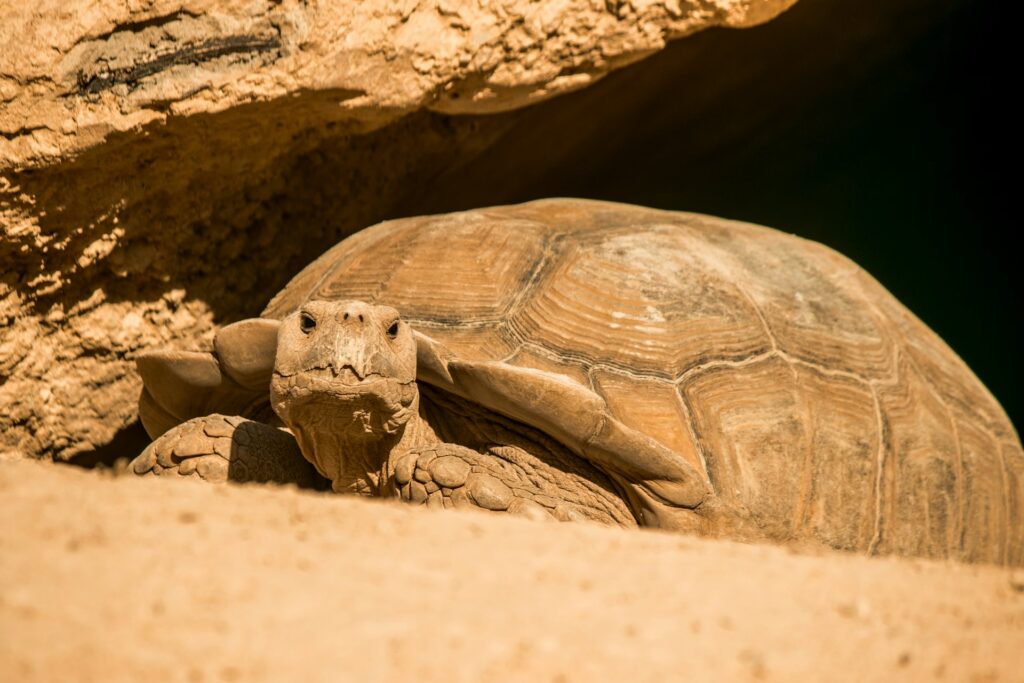
While tortoises are generally solitary animals, their burrows often become shared spaces that facilitate complex ecological interactions. Multiple tortoises may use different portions of extensive burrow systems, particularly in areas where suitable burrowing sites are limited by soil conditions or landscape features.
During extreme weather events, numerous animals of different species may simultaneously seek shelter in tortoise burrows, creating temporary wildlife communities united by their need for protection.
Young tortoises sometimes create their burrows as offshoots from adult tunnels, benefiting from the established structure while gaining independence.
Researchers have documented remarkable cases where more than 30 different vertebrate species were found utilizing a single gopher tortoise burrow system during various times of the year, highlighting these structures’ critical role as wildlife refuges.
Conservation Implications of Burrows
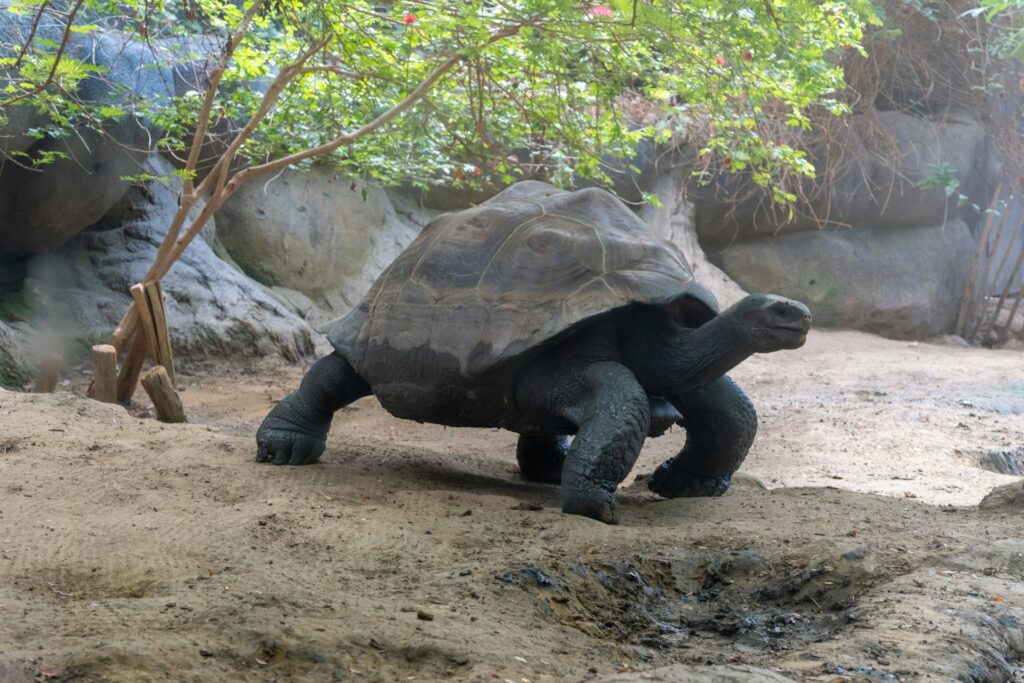
The burrowing behavior of tortoises has significant implications for conservation efforts aimed at protecting these increasingly threatened reptiles.
The presence and condition of burrows serve as important indicators of tortoise population health, with burrow surveys forming a critical component of monitoring programs for protected species.
Conservation strategies for burrowing tortoises must protect not just the animals themselves but also sufficient habitat areas with suitable soil conditions for burrow construction.
Human activities that compact soil, like off-road vehicle use or development, can render areas unsuitable for burrowing, effectively eliminating critical tortoise habitat even when vegetation remains intact.
Some conservation projects have experimented with creating artificial starter burrows to encourage tortoise occupation in restoration areas, though these typically require specific design features to be accepted by the animals.
The fact that tortoise burrows support hundreds of other species means that protecting these master diggers delivers multiplicative conservation benefits across entire ecosystems.
Threats to Burrowing Tortoises
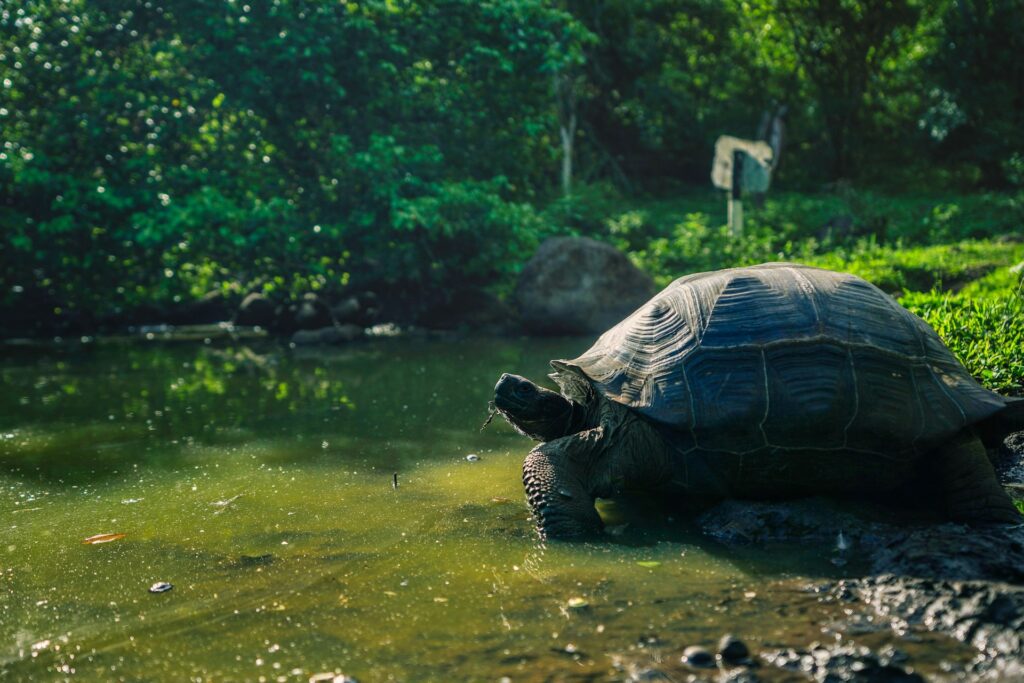
Despite their remarkable engineering abilities, burrowing tortoises face numerous threats that endanger their continued existence. Habitat fragmentation from urban development, agriculture, and infrastructure projects increasingly isolates tortoise populations and restricts their access to suitable burrowing sites.
Climate change poses a particularly insidious threat, as rising temperatures and changing precipitation patterns can alter soil moisture levels, potentially making some areas unsuitable for maintaining stable burrows.
Invasive species, such as fire ants in North America, can colonize tortoise burrows and attack hatchlings and even adult tortoises, reducing reproduction success and survival rates.
Perhaps most directly damaging is the deliberate destruction of burrows during land clearing operations, which can eliminate decades-old tunnel systems that would take generations of tortoises to replace.
Conservation efforts must address these multifaceted threats to ensure the future of these remarkable ecological engineers and the many species that depend on them.
The remarkable burrowing abilities of tortoises represent one of nature’s most impressive examples of adaptation.
These determined reptiles have evolved specialized anatomical features and behaviors that allow them to create underground sanctuaries critical for their survival in harsh environments.
Beyond benefiting the tortoises themselves, these burrow systems support rich biodiversity by providing shelter to hundreds of other species.
As we continue to learn more about these master excavators, the importance of protecting them and their habitats becomes increasingly clear.
Their burrows represent not just individual shelters but cornerstone structures that support entire ecosystems—living testimony to the profound impact that even slow-moving, seemingly simple animals can have on their environments through specialized adaptations perfected over millions of years of evolution.

